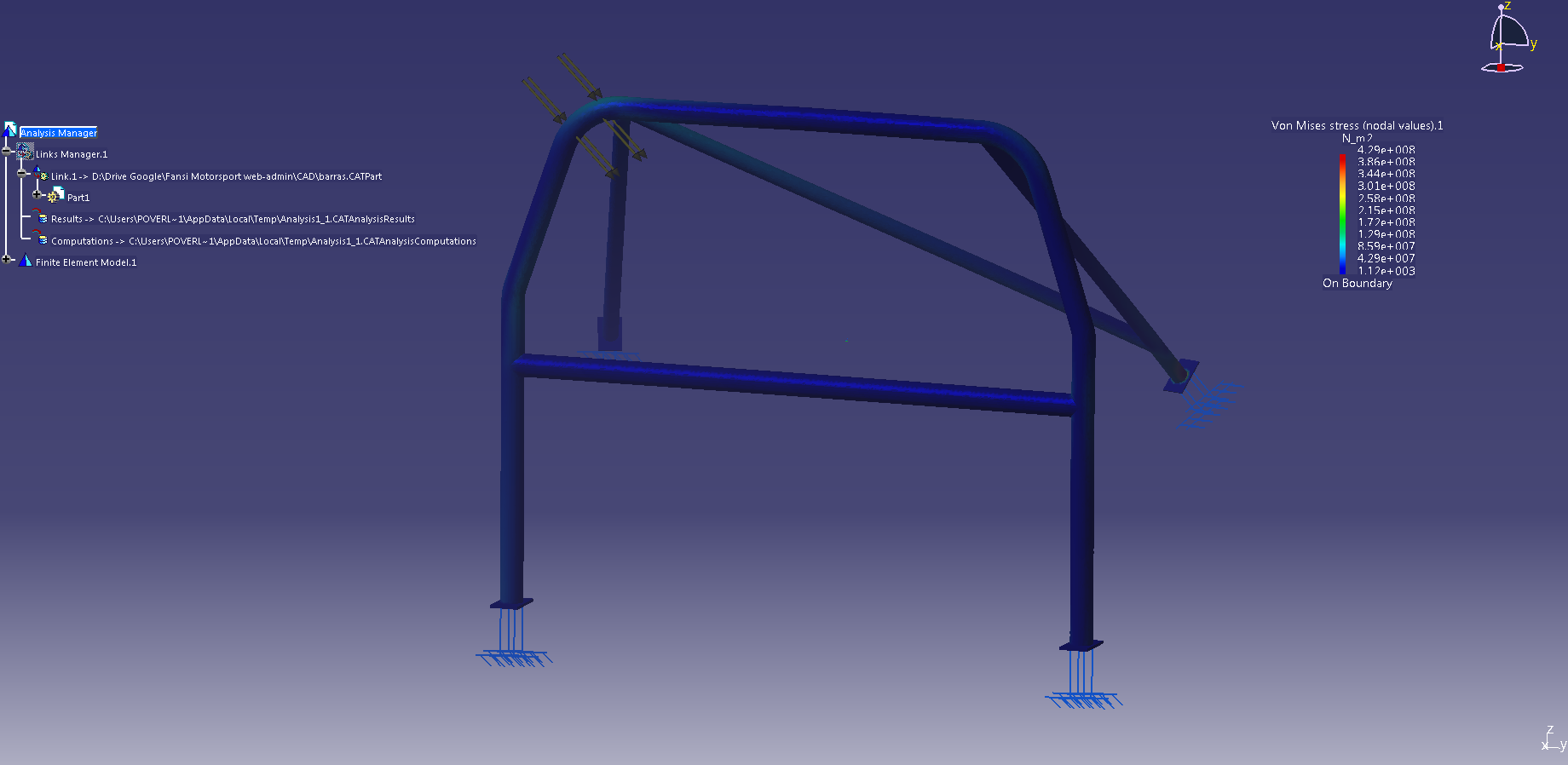Design of a roll cage for a BMW E30 318i
A rear roll cage is the minimum safety requirement imposed by the organization for the 24h of Braga 2014, a low cost endurance race. The rules for the event on the safety side are largely based on the How Not To Fail LeMons Safety Inspection Handbook, except that for this event only a rear roll cage is mandatory.
I am the involved with FANSI Motorsport, which are the organizers of the event this year as well as participants. And as a sort of team member, I have the chance to supervise the design of the roll cage for the car.
Contents
Design
The basic rear roll cage dimensions were taken from an OMP roll cage already installed in another E30 with some minor modifications to adapt the geometry to the four door 318i.
The primary objective of the frame is to protect the driver by reducing the deformation of the bodyshell in case of an impact. The rear roll cage consists of a main rollbar just behind the front seats, two backstays and four mounting feet. In addition, as the car is prior to 2002, only one diagonal member is added to the assembly as well as a transverse member fitted on the main rollbar.
A removable front to get a full roll cage is planned for the longer term. That would allow us to keep the E30 street legal, as for that, only a rear roll cage can be homologated in Spain.
Finite element analysis
The team manager at FANSI Motorsport decided to use ST37 steel pipes for which he found a supplier. That’s a steel with a yield strength of 235 MPa and a tensile strength of 360–510 MPa, just above the minimum tensile strength required to comply with Appendix J regulations [2].
To verify the integrity of the structure, a distributed load of 25 kN (~2.5 times GVM) was applied in different points of the structure. The results are shown below.
As we can see from the pictures, the addition of the transverse member reduces the maximum stresses on the main roll bar —additionally, the transverse member can be used to anchor the seat belts—. In this case, maximum values lay between the material yield strength and ultimate tensile strength, which means that it will deform to some extent but not break. The desired effect is to absorb the impact and distribute the forces all over the structure keeping the habitable area as intact as possible, something Latvala is very grateful for.
Update 12/02/14
Two days until the start of the 24 hours of Braga, we got the rear roll cage installed. Here’s a last minute picture at the shop:
References
[1] How Not To Fail LeMons Safety Inspection. 2014. [PDF] http://www.24hoursoflemons.com/images/How-Not-To-Fail-LeMons-Tech.pdf [Accessed: 20 Jan 2014].
[2] FIA Appendix J to the International Sporting Code – Article 253 Safety Equipment 2014.
[3] Safety Devices. 2011. Safety Devices Motorsport – Technical. [online] Available at: http://www.safetydevices.com/motorsport/technical/ [Accessed: 20 Jan 2014].
[4] Brown Davis Motorsport. 2009. Roll Cages, drop tanks, aluminium and custom fabrication, race vehicle preparation. [online] Available at: http://www.rollcage.com.au/rollcage.html [Accessed: 20 Jan 2014].
















